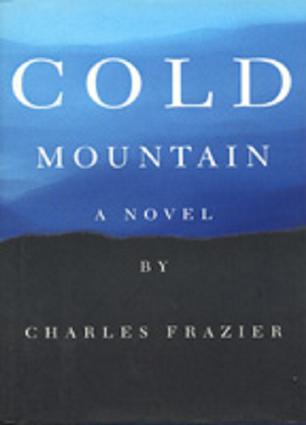For Christopher Fry
and the White Goddess:
The Edge of Eternity
Christian humanist playwright Christopher Fry, author of The Lady’s Not for Burning, died at 97 on June 30, 2005.
From Log24 on June 30:
Robert Graves, author of
The White Goddess:
A Historical Grammar of Poetic Myth—
How may the King hold back?
Royally then he barters life for love.
Or of the undying snake from chaos hatched,
Whose coils contain the ocean,
Into whose chops with naked sword he springs,
Then in black water, tangled by the reeds,
Battles three days and nights…
From Cold Mountain:
“He sat awhile on a rock, and then got up and walked all morning through the dim woods. The track was ill used, so coiled and knotted he could not say what its general tendency was. It aimed nowhere certain but up. The brush and bracken grew thick in the footway, and the ground seemed to be healing over, so that in some near future the way would not even remain as scar. For several miles it mostly wound its way through a forest of immense hemlocks, and the fog lay among them so thick that their green boughs were hidden. Only the black trunks were visible, rising into the low sky like old menhirs stood up by a forgotten race to memorialize the darkest events of their history….
They climbed to a bend and from there they walked on great slabs of rock. It seemed to Inman that they were at the lip of a cliff, for the smell of the thin air spoke of considerable height, though the fog closed off all visual check of loftiness….
Then he looked back down and felt a rush of vertigo as the lower world was suddenly revealed between his boot toes. He was indeed at the lip of a cliff, and he took one step back…. The country around was high, broken. Inman looked about and was startled to see a great knobby mountain forming up out of the fog to the west, looming into the sky. The sun broke through a slot in the clouds, and a great band of Jacob’s ladder suddenly hung in the air like a gauze curtain between Inman and the blue mountain….
Inman looked at the big grandfather mountain and then he looked beyond it to the lesser mountains as they faded off into the southwest horizon, bathed in faint smoky haze. Waves of mountains. For all the evidence the eye told, they were endless. The grey overlapping humps of the farthest peaks distinguished themselves only as slightly darker values of the pale grey air. The shapes and their ghostly appearance spoke to Inman in a way he could not clearly interpret. They graded off like the tapering of pain from the neck wound as it healed.”
See also the entries of July 3.
The crone figure in this section of Cold Mountain is not entirely unrelated to the girl accused of being a witch in Fry’s play and to Graves’s White Goddess.
From Fry’s obituary in The Guardian:
“Though less of a public theorist than Eliot, Fry still believed passionately in the validity of poetic drama. As he wrote in the magazine Adam: ‘In prose, we convey the eccentricity of things, in poetry their concentricity, the sense of relationship between them: a belief that all things express the same identity and are all contained in one discipline of revelation.'”
From Fry’s obituary in today’s New York Times:
“His plays radiated an optimistic faith in God and humanity, evoking, in his words, ‘a world in which we are poised on the edge of eternity, a world which has deeps and shadows of mystery, and God is anything but a sleeping partner.’ He said he wrote his plays in poetry because that was ‘the language in which man expresses his own amazement’ at the complexity both of himself and of a reality which, beneath the surface, was ‘wildly, perilously, inexplicably fantastic.'”



 .
.



























